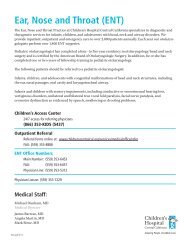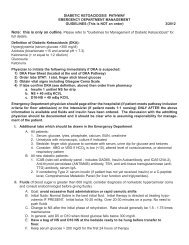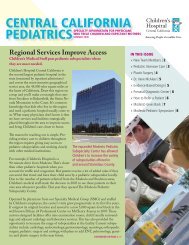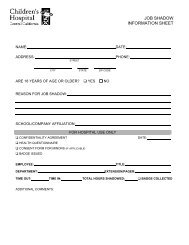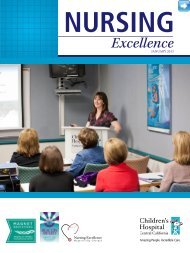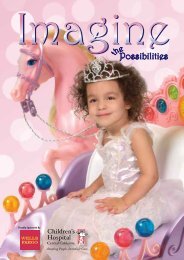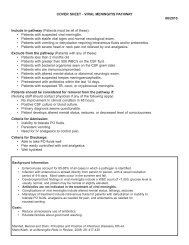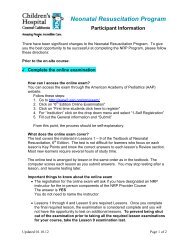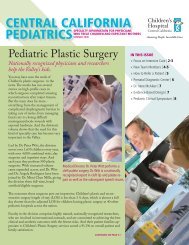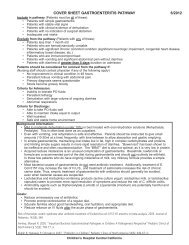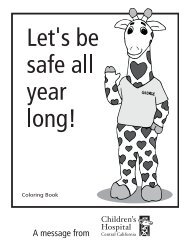Pertussis Pathway - Children's Hospital Central California
Pertussis Pathway - Children's Hospital Central California
Pertussis Pathway - Children's Hospital Central California
- No tags were found...
Create successful ePaper yourself
Turn your PDF publications into a flip-book with our unique Google optimized e-Paper software.
<strong>Pertussis</strong>Education Information for Patients and FamiliesWhat is the treatment for pertussis?The treatment for pertussis may include:• Antibiotics• Breathing treatments• Oxygen therapy• Medicines for a feverWhat can I do at home?• Keep your child calm, explain what’s happening. If you need further help on how todo this, talk with your nurse. Your nurse can also refer you to others who can help,for example, Child Life specialists, play therapists, etc.• Encourage your child to drink plenty of fluids and get lots of rest. Warm apple juiceis comforting and can help break the coughing spasms.• Use cool mist humidifiers• Raise the head of the bed if possible, so your child is not lying flat. This may make iteasier for him/her to breathe. DO NOT use pillows for infants.• Hold infants upright for feedings and place on side after feedings.• Give small frequent feedings.• Burp frequently.• NO SMOKING: Tobacco smoke makes coughing worse. Children who haverespiratory infections are more likely to have trouble breathing if they are aroundtobacco smoke. Do not let anyone smoke around your child or inside of your home orcar.• AVOID smells that trigger coughing like perfumes, air fresheners, candles, hairspray, smoke from fireplacesWhen should I call my child’s doctor?**If your child has:• coughing spasms that cause their face, hands, or feet to turn blue• nasal flaring (the openings of the nose open wide with breathing )• retractions (sinking of the skin between the ribs)• breathing that becomes faster• paleness to area around nose and mouth• a poor appetite, not drinking, or ability to eat or feed has worsened• difficulty waking up or is less active than usual• become very irritable or anxious, increase in complaint of pain or you are unable tocalm him or her• Fever of 100.4 degrees Fahrenheit for children two months of age or younger.• Do not give Acetominophen (Tylenol) or Ibuprofen (Pediaprofen) before calling yourdoctor.• A fever you are concerned aboutChildren’s <strong>Hospital</strong> <strong>Central</strong> <strong>California</strong> • 9300 Valley Children’s Place • Madera CA 93636 • (559) 353-3000Revised: 10/2008 Review by: 08/2011 Page 2 of 3



